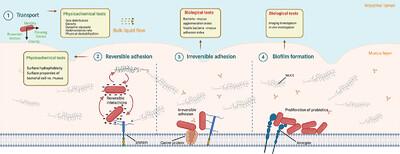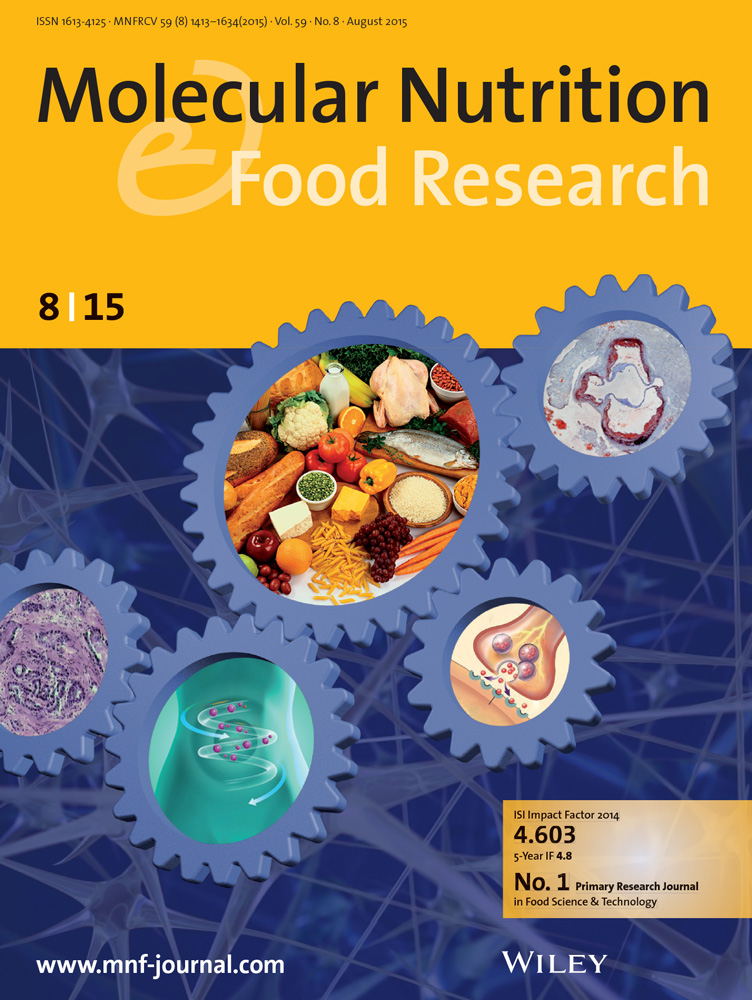释放益生菌潜能:评估益生菌粘附肠道潜能的物理化学方法
IF 4.5
2区 农林科学
Q1 FOOD SCIENCE & TECHNOLOGY
引用次数: 0
摘要
肠道内的细菌粘附是评估其作为益生菌有效性的关键。了解复杂肠道环境中的细菌粘附是具有挑战性的。本研究探讨了5株细菌(大肠杆菌、植物乳杆菌、粪杆菌、长双歧杆菌和长双歧杆菌亚种)的粘附机制和粘附潜力。婴儿)在细菌细胞到达肠道的初始阶段,使用不同的物理化学方法。评估了细菌的形态、流变性和表面特性。令人惊讶的是,以前的方法,如细菌对碳氢化合物的粘附以及细菌悬浮液与矿物油之间的界面张力,并没有完全捕捉到细菌对肠道粘液的粘附。因此,本研究引入了一种基于接触角测量、表面张力计算和粘附功的新方法来评估细菌对黏液的粘附。有趣的是,小肠和大肠粘液都是亲水的,因此高度亲水的细菌,如大肠杆菌和婴儿b杆菌,往往更容易粘附。此外,还提出了从散装液体运输阶段到不可逆粘附阶段对细菌粘附肠道的多标准评估。大肠杆菌和婴儿芽孢杆菌在肠道中表现出最高的整体粘附潜力,其次是Lpb。分别为植物属、长叶芽孢杆菌属和duncan属。这项工作为全面检查肠道细菌粘连提供了原始的物理化学方法。本文章由计算机程序翻译,如有差异,请以英文原文为准。

Unlocking Probiotic Potential: Physicochemical Approaches to Evaluate Probiotic Bacterial Adhesion Potential to the Intestinal Tract
Bacterial adhesion in the gut is critical to evaluate their effectiveness as probiotics. Understanding the bacterial adhesion within the complex gut environment is challenging. This study explores the adhesion mechanisms and the adhesion potential of five selected bacterial strains (Escherichia coli, Lactiplantibacillus plantarum, Faecalibacterium duncaniae, Bifidobacterium longum, and Bifidobacterium longum subsp. infantis) at the initial stages when bacterial cells arriving in the gut, using different physicochemical approaches. Bacterial morphology, rheology, and surface properties were evaluated. Surprisingly, previous methods such as bacterial adhesion to hydrocarbon and the interfacial tension between bacterial suspensions and mineral oil did not fully capture the bacterial adhesion to intestinal mucus. Consequently, this study introduced a novel approach to assess bacterial adhesion to mucus, based on contact angle measurements, calculation of surface tension, and work of adhesion. Interestingly, both small and large intestinal mucus are rather hydrophilic, and thus highly hydrophilic bacteria such as E. coli and B. infantis tend to adhere better. Additionally, a multicriteria evaluation of bacterial adhesion to the gut, from the bulk liquid transport stage until the irreversible adhesion, was proposed. E. coli and B. infantis demonstrated the highest overall adhesion potential in the intestinal tract, followed by Lpb. plantarum, B. longum, and F. duncaniae, respectively. This work contributed original physicochemical approaches to comprehensively examine bacterial adhesion in the gut.
求助全文
通过发布文献求助,成功后即可免费获取论文全文。
去求助
来源期刊

Molecular Nutrition & Food Research
工程技术-食品科技
CiteScore
8.70
自引率
1.90%
发文量
250
审稿时长
1.7 months
期刊介绍:
Molecular Nutrition & Food Research is a primary research journal devoted to health, safety and all aspects of molecular nutrition such as nutritional biochemistry, nutrigenomics and metabolomics aiming to link the information arising from related disciplines:
Bioactivity: Nutritional and medical effects of food constituents including bioavailability and kinetics.
Immunology: Understanding the interactions of food and the immune system.
Microbiology: Food spoilage, food pathogens, chemical and physical approaches of fermented foods and novel microbial processes.
Chemistry: Isolation and analysis of bioactive food ingredients while considering environmental aspects.
 求助内容:
求助内容: 应助结果提醒方式:
应助结果提醒方式:


